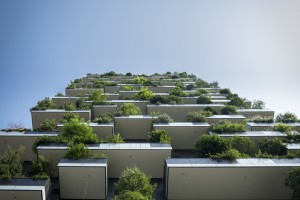Sustainability Branding
Like ‘branding’, ‘sustainability’ has become a word that means different things to different people and is in danger of becoming just as overused and misused.
As a brand consultant, I am dismayed at the still prevailing idea that branding is simply the marketing signature of a company, just about corporate identities and the visual media. Clearly that’s where it started – to differentiate one member of the herd from another but now there is a recognition that branding should be about how you really are and behave.
Sustainability should equally be about culture and people but is generally discussed in the context of specific interests and activities – energy consumption, carbon neutral design, green specifications, etc. Real Estate is obviously in the front line as it has measurable deliverables and outcomes, which can be controlled by legislation and valued accordingly. It is inevitable that the ‘tangible’ attributes and features are then argued through, boxes ticked and financial costs measured and identified. Again, just like ‘branding’, there is a difficulty for those dealing with more intangible ‘costs’ and values. Marketeers typically have more difficulty justifying their case for budget increases in relation to those able to satisfy financial directors with clear cost benefit figures.
Successful project management is about balancing time, cost and quality to achieve optimum ‘value’. Time and cost are classic ‘measurables’ but quality is more difficult to justify for those who need figures. Health, ‘well being’ and social sustainability are now included in project rhetoric and everyone involved needs to understand the implications of the more abstract ‘quality’ issues that will potentially make or break the short and long term real value of any investment.
Urban design, the design and investment in the space between buildings, has traditionally received less attention than the buildings themselves. One reason was the absence of firm figures – buildings are more ‘measurable‘ in terms of their function and potential returns on investment than ‘open air’, landscape and street environments and therefore more prone to budget cuts. However, the true costs of social cohesion, health and wellbeing are now being recognized and ‘valued’. Figures can be obvious – the rise in a street or district’s property prices and rentals, the growth of local restaurants and businesses. Less obvious, but powerful arguments, are the ‘ownership’ and pride of residents and users, reduced cost of vandalism, work absenteeism and health of citizens.
The message to all those involved in green buildings and sustainability is to really value and measure the ‘big picture’ and intangibles, however difficult that maybe. Successful branding is ultimately about people, culture and behaviour, less about simply physical appearance, logos and corporate livery. Effective ‘sustainability’ initiatives must similarly be about achieving first choice for all involved – people, stakeholders, society and the planet. Aligning the diverse interests of all the parties involved becomes increasingly difficult but exciting in these ‘interesting times’. The real agendas of individuals and organizations, from politicians to charities to trade unions, as well as local and international communities of interest must be balanced at a macro and micro level. Commerciality and public interest have to be matched for the greater good.
Increasingly there needs to be a broader appreciation and understanding the true dilemmas and challenges supposed by ‘sustainability’. Maybe we need some new words to differentiate ‘sustainable’ and initiatives to better define and integrate the needs of individuals and society as well as ‘green’ building and technical practices.
There is a danger that ‘sustainability’ is starting to become another generic adjective loosely applied to any activity to achieve a politically correct soundbite. Lets hope ‘sustainable branding’ can become a real ‘best practice’ principle and not just new ‘packaging’ spin for continuing outdated practices.
Clive Woodger
TAGS: branding, real estate, sustainability, urban

